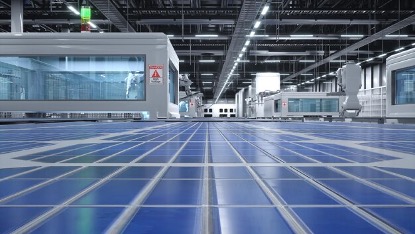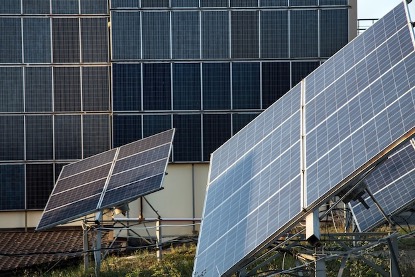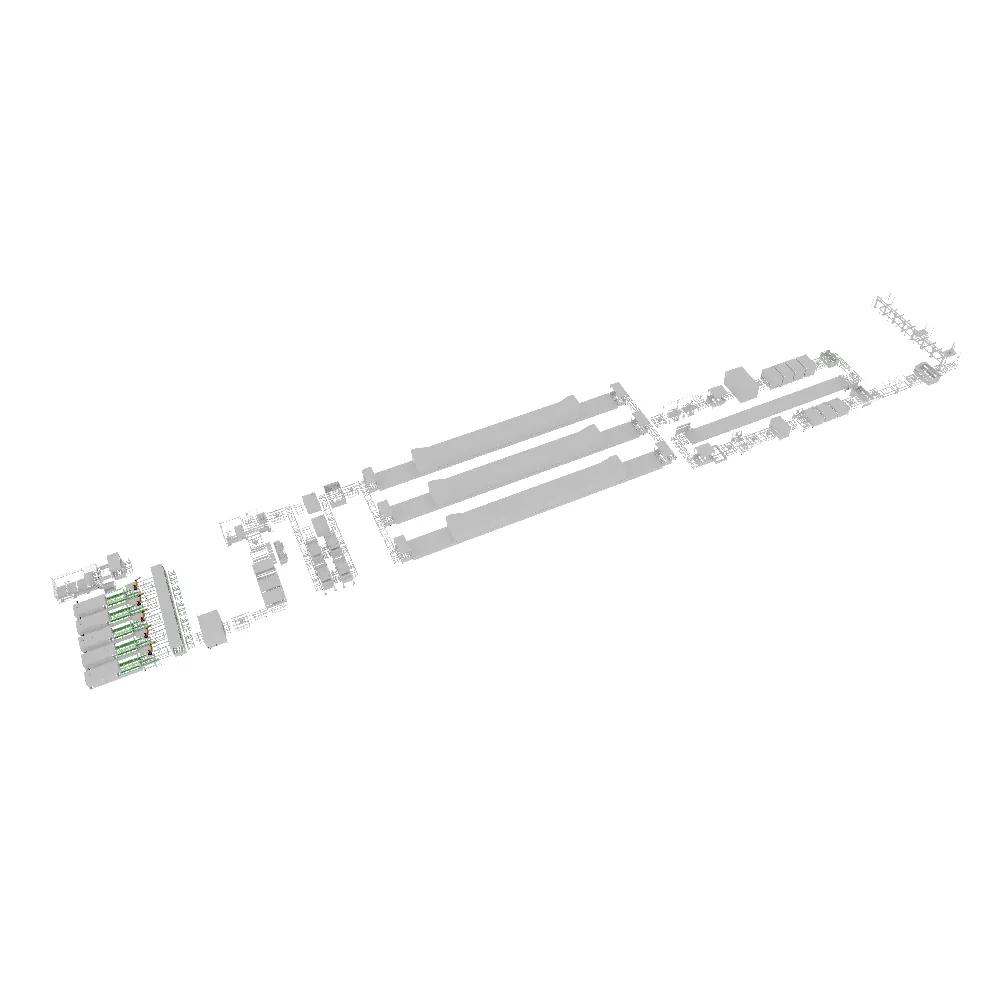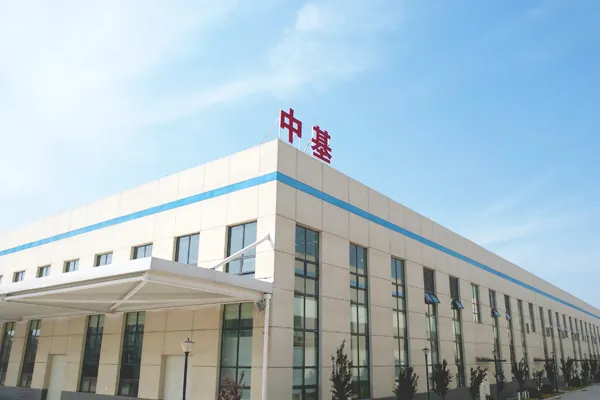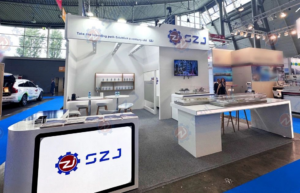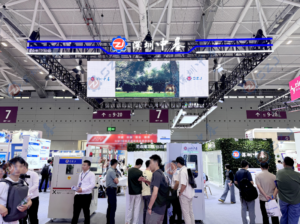As the world progressively pivots towards sustainable energy sources, photovoltaic (PV) solutions have emerged as a cornerstone in the renewable energy sector. The significance of PV technology lies in its ability to harness the sun’s abundant energy and convert it into a clean, reliable, and renewable source of electricity. According to the IEA’s annual market report for 2023, global renewable energy capacity saw a growth of 50% compared to the previous year, with solar energy being a significant contributor to this growth[1].
With the global demand for solar energy systems escalating, the industry faces the dual challenge of increasing production volumes while maintaining high capacity and standards of quality. The flaws in manufacturing photovoltaic solutions often pose significant obstacles, hindering the efficiency and reliability of solar energy systems. From defects of cutting and slicing in panel coatings to sealing on solar batteries, these flaws can compromise the yields to meet the order and the performance of the photovoltaic solution.
How to fix the intricacies of the photovoltaic manufacturing process? In today’s blog, we are going to examine the common flaws that can arise when manufacturing components in photovoltaic solutions and see how an automated assembly line can solve these challenges in photovoltaic solutions.
(Copyright Photo from: https://freepik.com/free-photo/close-up-pv-cell-produced-manufacturing-warehouse-3d-illustration_145844076.htm#fromView=search&page=1&position=3&uuid=2134d878-7e4b-449e-8036-a60b47d12a9c)
What Deflects Would Meet When Manufacturing the Components in Photovoltaic Solution?
In the context of photovoltaic system manufacturing, several flaws brought by conventional manufacturing can arise during the production of key components, which can ultimately affect the efficiency and longevity of the systems. Let’s delve into some of these manufacturing challenges:
When Manufacturing Silicon Wafers
- Cutting and Slicing: The traditional process of cutting silicon ingots into wafers can result in various defects, such as chipping, cracking, or surface damage. Achieving clean cuts without compromising the structural integrity of the wafers is crucial for optimal performance.
- Uniformity and Thickness Control: Achieving uniformity in thickness across a batch of silicon wafers is more difficult without automated monitoring and adjustment systems. This can result in a higher percentage of wafers that do not meet the required specifications, influencing the overall efficiency of the solar cells.
- Yield Optimization: With these deflects above, PV manufacturers find it easier to face yield limitations. They could not meet the growing demands of photovoltaic solutions in the market.
When Manufacturing the Solar Battery
- Electrode Coating: Traditional electrode coating in battery manufacturing can compromise precision due to limitations in manufacturing accuracy and operational stability. Inconsistencies arise from imperfect control over dynamic tension during coating and from the variability in temperature and airflow management during the drying phase.
- Sealing: Manual sealing techniques may not provide the same level of consistency and reliability as automated sealing processes, which can increase the risk of environmental contaminants affecting the battery’s longevity and safety.
- Safety Issue: Safety flaws in the conventional manufacturing process of solar batteries can arise from various stages of production, leading to potential hazards for workers and the environment. For example, workers may be exposed to hazardous chemicals used in the battery manufacturing process, such as toxic metals and solvents, which can cause illness if appropriate safety measures are not in place. Besides, the use of machinery and heavy equipment in process can pose a risk of injury if protocols are not followed.
(Copyright Photo from: https://www.freepik.com/free-photo/photovoltaics-solar-power-station-energy-from-natural_10896367.htm#fromView=search&page=2&position=30&uuid=2134d878-7e4b-449e-8036-a60b47d12a9c)
What Does It Bring by Conventional Photovoltaic Solution Manufacturing
The flaws in the conventional production of photovoltaic solutions can have a ripple effect that impacts various stakeholders in the solar energy industry, including manufacturers, installers, and end consumers.
Here’s a closer look at what you would encounter under these production flaws:
Impact on the Collaborative Installers
Project Delays: Your collaborative installers may experience delays in their projects due to the need to source replacement modules or deal with returns, which can affect their project timelines and profitability.
Customer Satisfaction: Installers rely on positive customer feedback to grow their business. If the photovoltaic solutions they install have performance issues due to manufacturing flaws, it can lead to dissatisfied customers and negative reviews.
Increased Service Costs: Installers may need to invest additional resources in servicing and maintaining systems with flawed components, leading to higher service costs and reduced margins.
Impact on Consumers
Reduced Energy Output: Flaws in PV modules can result in lower energy output, which means consumers may not achieve the expected savings on their energy bills.
System Reliability: Consumers rely on their photovoltaic solution to collect a stable source of renewable energy and use. Manufacturing defects can compromise the reliability of these systems, leading to unexpected downtime and maintenance costs.
Resale Value: The resale value of a property equipped with a home photovoltaic solution can be affected if the system has a history of performance issues. Consumers may find it harder to sell their property or may receive lower offers due to perceived risks.
Safety Concerns: In some cases, manufacturing flaws can pose safety risks, such as increased risk of fire or electrical faults. This can lead to additional potential safety hazards and strain for consumers.
Impact on Manufacturers Itself
Operational Disruptions: Identifying and addressing production flaws can disrupt manufacturing processes, leading to delays in delivery and increased operational costs.
Financial Losses: Manufacturing defects can lead to significant financial losses due to product recalls, warranty claims, potential legal liabilities, and regulatory penalties.
Reputation Damage: A track record of producing flawed PV modules feedbacked by the customers and installers can severely damage a manufacturer’s reputation, being harder to attract new customers and retain existing ones.
How to Change the Flaws Brought by Conventional Photovoltaic Solution Manufacturing?
To overcome the manufacturing flaws that can negatively impact manufacturers, installers, and consumers, photovoltaic solution manufacturers and providers can implement a variety of solutions:
Employee Training and Education
Manufacturers can invest in comprehensive training programs to ensure that their employees are well-trained in the latest production techniques, quality control measures, and safety protocols. This includes training on:
- Ways of adhering to industry standards and regulations
- Proper handling and processing of materials to prevent defects
- Identification of common defects and how to avoid them
- Use of advanced equipment and machinery in the production process
Advanced Testing
Implementing rigorous testing protocols at various stages of production of photovoltaic solutions can help identify and rectify defects before they become a larger issue. This includes:
- In-process testing to monitor the quality of individual components and intermediate products
- Final product testing to ensure that each PV module meets performance and safety standards
- Stress tests and long-term performance evaluations to predict the durability and reliability of the modules
- Adoption of predictive maintenance strategies using data analytics to identify potential issues before significant problems happen
Automated Assembly Lines for Photovoltaic Solution
If you are still using manual and semi-automated assembly lines for providing photovoltaic solutions to clients, experience the fully automated assembly line. It can significantly lower the risk of human error and enhance the overall quality and consistency of the production process.
Talking specifically, here are the reasons that you should invest this in your photovoltaic solution factory:
- Operation of precision machinery to handle tasks such as cutting, soldering, and lamination.
- Robotic systems for the assembly and packaging of PV modules can improve efficiency and reduce the risk of damage during handling.
- Use of advanced vision systems and sensors to inspect the modules for defects in real-time and automatically sort out any that do not meet quality standards.
- Integration of AI and computing to optimize production processes, predict potential issues and improve overall system performance.
Introduce SZJ Automation’s Intelligent Solutions for Photovoltaic Cell Production
At SZJ Automation, we focus on upgrading the manufacturing process into automated and smart. For the photovoltaic industry, our automated assembly lines, the Intelligent Solution for Photovoltaic Cell Production, can deliver high-quality photovoltaic solutions.
Our SZJ Automation’s automated assembly line for photovoltaic solutions is tailored to cover all three major links in the photovoltaic industry chain: silicon wafers, batteries, and modules. This comprehensive approach ensures that manufacturers can rely on a single source for their comprehensive production needs, improving overall efficiency.
Talking specifically, here’s how:
Advanced Battery Technology Support
Our automated assembly line is capable of handling a wide range of battery types, from 156 to 230mm, with support for 5BB to 20BB cell interconnection patterns. This battery assembly also accommodates various advanced battery technologies, including PERC (Passivated Emitter and Rear Cell), Heterojunction, and TopCon, ensuring that solar battery manufacturers can produce the latest and most efficient solar cell technologies.
Flexible Module Manufacturing
This automated assembly line system is designed to produce a variety of module specifications, including half-cell 120/144-cell panel modules and 210mm cell three-piece panels. It supports both conventional and double-glass modules, creating flexibility for manufacturers to meet diverse market demands.
Optimized Production Capacity
With an annual throughput of 800MW/year, our SZJ Automation’s production line is capable of meeting the needs of large-scale photovoltaic manufacturers. This high throughput, combined with a machine operating rate of ≥98%, ensures that manufacturers can produce a substantial volume of products, meeting growing business opportunities in photovoltaic solutions.
Quality Guarantee
Our Intelligent Solutions for Photovoltaic Cell Production Line are engineered to elevate quality control and reinforce safety standards within the PV industry. With the integration of automation technology and computer control, our automated assembly line delivers precision and uniformity throughout the manufacturing process, significantly reducing human error and the potential for product variability.
Conclusion
With automated assembly lines, PV solution manufacturers can expand their production capacity, avoid safety issues, and deliver high-quality photovoltaic solutions to clients. And our Intelligent Solution for Photovoltaic Cell Production is one of the best turnkey PV manufacturing systems in the market. You can trust our SZJ Automation because we are a professional automation manufacturer in the market with over 2 decades of experience. With hundreds of patents, we can always present you the best automated assembly line in battery manufacturing, and photovoltaic solutions. Just contact us today to learn more about automated assembly lines!
Reference
- Available at: https://www.nea.gov.cn/2024-01/19/c_1310761053.htm

